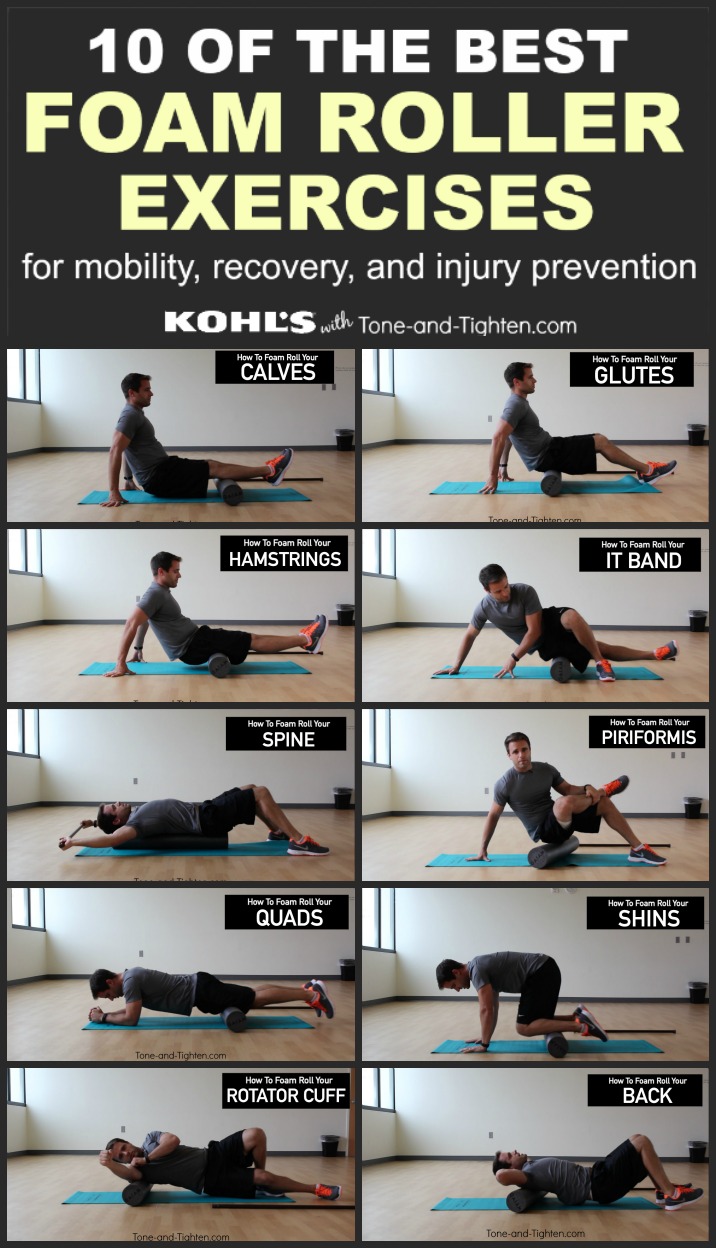Printable Foam Roller Exercises - Printable Word Searches
Foam Roller Exercises
 Are you looking for effective ways to enhance your fitness routine? Look no further than foam roller exercises. Foam rolling is a self-myofascial release technique that can help alleviate muscle tension, improve flexibility, and enhance performance. Whether you are an athlete or simply someone who wants to take better care of their muscles, incorporating foam roller exercises into your fitness routine can bring numerous benefits.
Are you looking for effective ways to enhance your fitness routine? Look no further than foam roller exercises. Foam rolling is a self-myofascial release technique that can help alleviate muscle tension, improve flexibility, and enhance performance. Whether you are an athlete or simply someone who wants to take better care of their muscles, incorporating foam roller exercises into your fitness routine can bring numerous benefits.
Why Foam Rolling Works
 Foam rolling is a form of self-massage that targets the fascia, a connective tissue that surrounds and supports your muscles. When you foam roll, you apply pressure to specific muscle groups, helping to break up adhesions and knots in the fascia. This, in turn, can improve blood flow and increase flexibility.
Foam rolling is a form of self-massage that targets the fascia, a connective tissue that surrounds and supports your muscles. When you foam roll, you apply pressure to specific muscle groups, helping to break up adhesions and knots in the fascia. This, in turn, can improve blood flow and increase flexibility.
Additionally, foam rolling can help relieve muscle soreness and reduce the risk of injury. By regularly foam rolling, you can improve your range of motion and joint mobility, allowing you to move more efficiently and effectively during workouts.
Incorporating Foam Roller Exercises
 If you’re new to foam rolling, it’s essential to start with the basic exercises to learn proper technique and gradually increase the intensity and duration. Here are a few foam roller exercises to get you started:
If you’re new to foam rolling, it’s essential to start with the basic exercises to learn proper technique and gradually increase the intensity and duration. Here are a few foam roller exercises to get you started:
- 1. Quadriceps Roll: Sit on a foam roller with your legs out in front of you. Roll from above your knee to your hip, focusing on any tight spots.
- 2. Hamstring Roll: Sit with one hamstring on top of a foam roller. Roll from just above your knee to your glutes, targeting any tight areas.
- 3. Glute Roll: Sit on a foam roller with one ankle crossed over the opposite knee. Roll over your glutes and piriformis muscle, which can get tight from prolonged sitting.
Remember to breathe deeply and relax while foam rolling. It’s normal to feel some discomfort, especially if you have tight muscles, but avoid rolling over areas that cause sharp pain.
The Benefits of Foam Rolling
 Regular foam rolling can offer numerous benefits for your body and overall well-being. Some of the key advantages include:
Regular foam rolling can offer numerous benefits for your body and overall well-being. Some of the key advantages include:
- Improved Flexibility: Foam rolling helps release tension in muscles and fascia, increasing your range of motion and enhancing flexibility.
- Reduced Muscle Soreness: By increasing blood flow to your muscles, foam rolling can help reduce post-workout soreness and promote faster recovery.
- Injury Prevention: Foam rolling can help prevent injuries by improving muscle imbalances, promoting proper alignment, and reducing muscle tightness.
Achieving Optimal Results
 To achieve optimal results with foam rolling, it’s important to incorporate it into your fitness routine consistently. Aim to foam roll for at least 10-15 minutes, two to three times per week. You can do it before or after your workout or even on rest days to enhance recovery.
To achieve optimal results with foam rolling, it’s important to incorporate it into your fitness routine consistently. Aim to foam roll for at least 10-15 minutes, two to three times per week. You can do it before or after your workout or even on rest days to enhance recovery.
Additionally, it’s essential to listen to your body and adjust the intensity of your foam rolling session accordingly. If an area feels particularly tight or tender, spend additional time rolling over that specific muscle group.
Conclusion
 Foam rolling is a valuable tool in maintaining and improving your physical well-being. By incorporating foam roller exercises into your fitness routine, you can experience greater flexibility, reduced muscle soreness, and enhanced performance. Remember to start with the basic exercises and gradually progress to more advanced movements as you become more comfortable.
Foam rolling is a valuable tool in maintaining and improving your physical well-being. By incorporating foam roller exercises into your fitness routine, you can experience greater flexibility, reduced muscle soreness, and enhanced performance. Remember to start with the basic exercises and gradually progress to more advanced movements as you become more comfortable.
Whether you’re an athlete or someone looking to improve your overall health, foam rolling can be an effective addition to your exercise regimen. So, grab a foam roller, follow the printable foam roller exercises provided, and take care of those muscles!